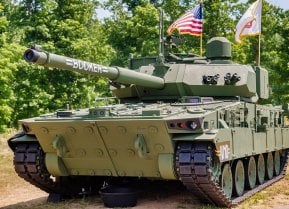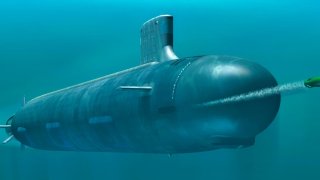USS Idaho: The Navy's New Virginia-Class Submarine Is a Powerhouse
Designed for use in both the open ocean and for littoral missions, which include anti-submarine warfare (ASW) and intelligence-gathering operations, the U.S. Navy’s Virginia-class was developed to replace the more expensive Seawolf-class while still providing a capable boat to address nautical threats from near-peer adversaries in the twenty-first century
The newest Virginia-class nuclear-powered attack submarine, the future USS Idaho (SSN-799)—the fifth vessel to be named in honor of the Gem State—was commissioned on Saturday in a ceremony at General Dynamics Electric Boat, in Groton, Connecticut. Construction began on the submarine—the twenty-sixth of the class—in 2017
“This is the first U.S. Navy warship to bear the Idaho name in more than 100 years,” said USS Commissioning Committee advisory board member and former Idaho governor Dirk Kempthorne.
“She was last christened as a battleship in June 1917. It’s been over 100 years since there’s been a USS Idaho,” added Kempthorne. “That was a battleship. Battleship 42 in WWII. Now we have the great honor of having an additional ship named USS Idaho SSN 799. States that have the honor of having a namesake ship, then support the ship, the crew, the families of the crew to increase habitability aboard that ship...is really quite stark.”
SSN-799 Commissioned With The Waters of Idaho
In a twist on the time-honored Navy tradition of breaking a bottle of sparkling wine across the bow, the submarine’s sponsor, Teresa Stackley, christened the boat with water she has collected from several lakes in Idaho, including Lake Pend Oreille, Payette Lake, Henrys Lake and Redfish Lake.
Though landlocked, the state of Idaho still prides itself on its rich naval history and continuing contributions to the United States Navy’s fleet. The U.S. Navy’s Acoustic Research Detachment (ARD) is located on Lake Pend Oreille, Idaho’s largest and deepest body of water. At 1,150 feet in depth, it is also the quietest body of water, providing an ideal environment for acoustic testing without the attendant problems and costs of open ocean operations. According to the Department of Defense, the state-of-the-art facility supports the research, development, testing, and evaluation of submarine acoustic stealth technology and propulsor design, as well as the calibration of full-scale acoustic transducers.
Lake Pend Oreille is also a critical body of water to the U.S. submarine force and is used by the ARD for the testing of acoustic properties similar to the open ocean—but with less background noise, and without fears that tests can be monitored by foreign governments.
The Virginia-class Attack Subs
Designed for use in both the open ocean and for littoral missions, which include anti-submarine warfare (ASW) and intelligence-gathering operations, the U.S. Navy’s Virginia-class was developed to replace the more expensive Seawolf-class while still providing a capable boat to address nautical threats from near-peer adversaries in the twenty-first century.
Since entering service in 2004, the Virginia-class subs have been able to support five of the U.S. Navy’s six maritime strategy core capabilities including sea control, power projection, forward presence, maritime security, and deterrence. It is able to do this by providing a combination of stealth, endurance, mobility, and firepower. The SSNs have a fly-by-wire ship control system that also provides improved shallow-water ship handling, while subs were also designed to deploy special operator forces including Navy SEALS. A reconfigurable torpedo room can accommodate a large number of special operations forces and all their equipment for prolonged deployments and future off-board payloads.
As part of the U.S. Navy’s fiscal year 2025 budget request, the sea service has proposed significant cutbacks, including halving its usual order of Virginia-class attack submarines to just one, deviating from the previous four-year trend of acquiring two per year.
Author Experience and Expertise: Peter Suciu
Peter Suciu is a Michigan-based writer. He has contributed to more than four dozen magazines, newspapers, and websites with over 3,200 published pieces over a twenty-year career in journalism. He regularly writes about military hardware, firearms history, cybersecurity, politics, and international affairs. Peter is also a Contributing Writer for Forbes and Clearance Jobs. You can follow him on Twitter: @PeterSuciu. You can email the author: [email protected].
Image Credit: U.S. Navy.


